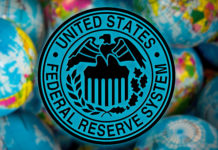The upbeat macro data releases continued to push markets towards pricing in tighter financial conditions. February Flash PMIs beat expectations both in the euro area and the US, with especially the services sector activity recovering faster than many had anticipated. Price indicators gave more mixed signals, as input price pressures appear to be easing while output prices continue to rise at a rapid pace.
While the strong leading indicators have eased recession fears, inflation risks remain elevated. In Sweden, the January Core CPIF inflation accelerated to 8.7% y/y (from 8.4%; consensus 8.2%), which combined with the hawkish Riksbank comments and February minutes continued to support Swedish rates and the krona. We have lifted our expectations on the upcoming Riksbank rate hikes, see more in Flash Comment Riksbank – February 2023 Minutes – We now expect 50bp in April and 25bp in June, 20 February.
Rising inflation expectations have lifted markets’ expectations of policy rates elsewhere as well. Interestingly, the recent uptick in markets’ inflation expectations has not coincided with higher commodity prices, which could signal fears of more persistent underlying inflation. The February FOMC minutes hawkishly signalled that some Fed members had favoured a 50bp hike in the previous meeting. In addition, some participants considered that the past easing in financial conditions could warrant a tighter monetary policy stance, even though Powell has downplayed the risk in the past. Markets are already pricing three 25bp Fed hikes by summer, and rates remaining above 5 % through 2023.
This morning, core inflation ticked higher to 4.2% even in Japan. We think it is just a matter of time before the Bank of Japan adjusts the YCC to allow the 10y government bond yield to rise further, and eventually exits the negative policy rate. The monetary policy shift will also be a supporting factor for JPY FX, which we now reflect in our FX Trading Portfolio – Time to go short USD/JPY as tactical trade, 23 January.
Today marks exactly one year since Russia began its attack into Ukraine. World’s foreign policy leaders met at the Munich Security Conference last weekend but failed to spark much optimism around a resolution to the war. Relations remain tense not just between the West and Russia, but increasingly also China, whose top diplomat Wang Yi visited Moscow this week to deepen the countries’ bilateral relations. This morning, China published its 12-point proposal for peace (you can read the full text here), but we still think talks about peace are highly premature as neither of the sides of the conflict has shown any willingness to compromise on their original military objectives. US has even accused China of planning to deliver weapons for Russia to be used in the war, but we doubt China is willing to risk falling under severe sanctions for no economic upside.
Next week, the focus turns to the euro area flash HICP figures on Thursday, consensus is looking for a further downtick in the headline data, but stable core inflation around 5.3% y/y. US February ISM indices are likely to tick higher following the PMIs this week, and we expect a decent rise to the Chinese Caixin Manufacturing PMI as well. While the official NBS PMIs rebounded already in January, we generally expect the data to confirm a front-loaded recovery in China.













